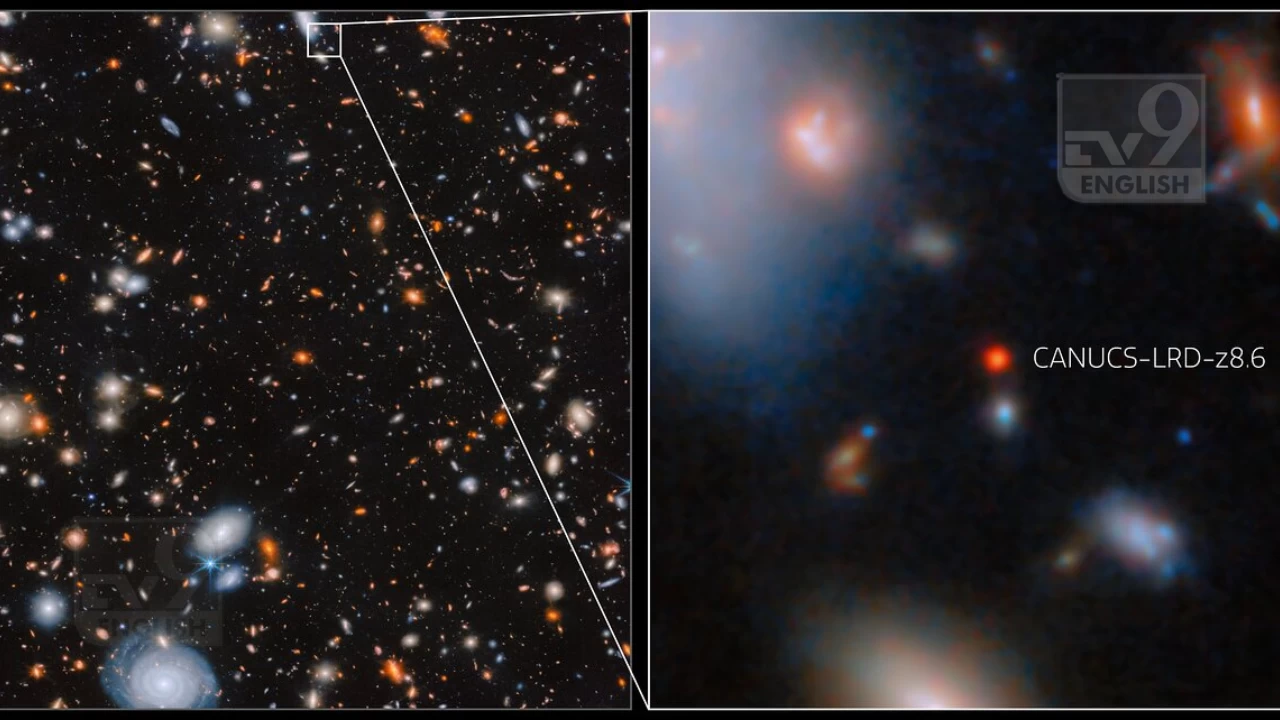

By signing in or creating an account, you agree with Associated Broadcasting Company's Terms & Conditions and Privacy Policy.


By signing in or creating an account, you agree with Associated Broadcasting Company's Terms & Conditions and Privacy Policy.

New Delhi: NASA’s James Webb Space Telescope has spotted something that is sending ripples through the astronomy world. Scientists have confirmed a rapidly growing supermassive black hole inside a small galaxy that formed just 570 million years after the Big Bang.
The galaxy, named CANUCS-LRD-z8.6, belongs to a strange family of small, extremely red galaxies that astronomers have been debating for years. These “Little Red Dots,” as researchers call them, keep showing up in James Webb’s deep surveys. The new finding has finally given scientists a clearer sense of what some of them may be hiding.
Using its Near Infrared Spectrograph, Webb picked up faint light signatures coming from this tiny galaxy. These signals showed highly ionised gas swirling around a compact centre. That pattern appears only when something powerful sits in the middle, pulling matter at high speeds.
Lead researcher Roberta Tripodi described the finding by saying, “This discovery is truly remarkable. We’ve observed a galaxy from less than 600 million years after the Big Bang, and not only is it hosting a supermassive black hole, but the black hole is growing rapidly.” Her statement reflects the real surprise here, because such small galaxies were never thought to host black holes that expand so fast.
The team measured the galaxy’s mass and compared it with the black hole’s mass, and the numbers did not match the usual relationship seen in nearby galaxies. CANUCS-LRD-z8.6 has fewer stars and fewer heavy elements, suggesting it is still young, yet its black hole is already far bigger than expected.
Usually, a galaxy and its central black hole grow together. Bigger galaxies tend to have bigger black holes. This new galaxy breaks that rule completely. Researchers also found that:
Nicholas Martis, who helped analyse the data, said, “The spectral features revealed by Webb provided clear signs of an accreting black hole at the centre of the galaxy.” He added that the black hole’s mass compared with the galaxy’s stellar mass is unusual, pushing scientists to rethink how early black holes expanded.
The team now plans new observations using ALMA and additional Webb data to examine the cold gas and dust inside the galaxy. That will help them understand what fuel is feeding this early black hole and how fast it is pulling matter inward.
Maruša Bradač, who leads the group in Slovenia, said the result raises new questions about how the first massive black holes appeared so quickly after the Big Bang. She added that finding more galaxies like this one will help astronomers map the origins of black holes and the formation of early quasars.
As Webb continues to scan deeper into the cosmos, astronomers expect more surprises. Early black holes might have grown far faster than galaxies themselves, changing our understanding of the first billion years of cosmic history.








